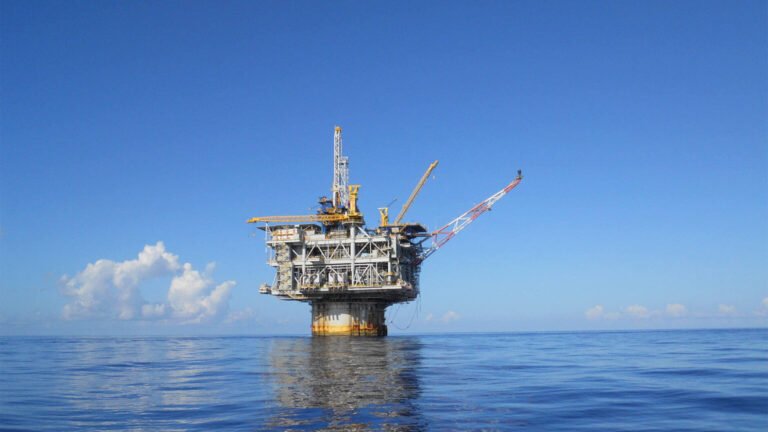The Future of Offshore Energy: A Conversation with Ruairi Kerr, EnerMech’s CCO
The complex state of play in the offshore energy market space, with its twisting and reshaping pathways, brings not only challenges to overcome but also opportunities to prosper to all who dare to venture both into its old and emerging dimensions. With these intricacies in mind, EnerMech, an Aberdeen-headquartered integrated solutions specialist, has pinpointed the focus on high-growth regions, subsea work, and floating production, storage, and offloading (FPSO) assignments as its tripartite resilience formula, which it uses as keys to achieving resilience against the backdrop of ongoing economic and geopolitical woes.
While diving into the current offshore energy trends and complications to shed light on the crucial headwinds and tailwinds of this era, Ruairi Kerr, EnerMech’s Chief Commercial Officer (CCO), has offered insights into the FPSO and oil and gas projects the firm is working on alongside the existing growth opportunities within the global offshore energy arena.
Kerr is a chartered civil engineer, who has experience in the infrastructure and oil and gas sectors in the Gulf Cooperation Council (GCC) member states, Asia Pacific, and Europe. Before joining EnerMech in 2020, he worked at Kentz as Regional Director Of Business Development for APAC.
Challenges and Opportunities in Offshore Energy
As winds of change sweep across the energy ecosystem, how can the offshore energy industry ensure its resilience in the face of the current challenges, spanning the regulatory realm, government policies, economy, trade wars, and other ongoing issues?
Ruairi Kerr: While there are many broader factors shaping the global energy landscape, one of the most immediate challenges facing the offshore sector is the sustained period of low oil prices, driven in part by OPEC’s continued output and market oversupply. This creates pressure across the industry, even as we witness unprecedented levels of investment in offshore deepwater developments.
Resilience, therefore, hinges on the ability to operate efficiently and remain focused on areas where investment is strongest. EnerMech is deeply rooted in offshore deepwater operations and is active in seven of the ten key global markets.
Headwinds and Tailwinds of Offshore Energy
Could you tell us more about the main headwinds and tailwinds of today and tomorrow that the offshore energy industry needs to be aware of and come to grips with?
Ruairi Kerr: A major headwind is undoubtedly the sustained low oil price environment. This creates pressure across the value chain, particularly when paired with high commercial risk models like lump-sum contracting. On the tailwind side, we are seeing a surge in offshore deepwater investment across key global markets.
Global Challenges for the Offshore Energy Industry
What would you pinpoint as the biggest global challenge for the offshore energy industry to tackle, especially in its oil and gas arena?
Ruairi Kerr: One of the most pressing challenges is the industry’s contracting and commercial risk environment. Large engineering, procurement, construction, and installation (EPCI) contractors are taking on multibillion-dollar projects under lump-sum agreements, which pushes a disproportionate amount of risk onto the supply chain.
This is particularly problematic in offshore environments, where logistics, customs, equipment movement and personnel deployment are complex and unpredictable. If not managed carefully, this risk transfer could lead to the disappearance or consolidation of smaller but vital suppliers.
Potential for Growth in Offshore Energy
Where do you see the highest potential for growth within the global offshore energy landscape?
Ruairi Kerr: The strongest geographical growth opportunities lie in Brazil, Guyana, Suriname, the Gulf of Mexico, West Africa and Mozambique. In terms of project types, the focus is on complex subsea infrastructure tied to FPSO and FLNG vessels.
These developments require integrated capabilities across both fabrication (often in Asia) and offshore installation. EnerMech is uniquely positioned to support this entire value chain, from subsea through to topside integration, setting us apart as one of the few companies with this breadth of capability.
Future Focus of EnerMech in Offshore Energy
What will be EnerMech’s core offshore energy focus over the next decade and up to 2050?
Ruairi Kerr: Our business has been restructured to reflect a long-term strategic focus across three key business units, delivering value across the full asset lifecycle, from design to decommissioning, these are: Energy Solutions (offshore), Infrastructure and Industrial Solutions (onshore), and Lifting Solutions.
For offshore, our CapEx efforts are focused on subsea deepwater infrastructure and FPSO-related projects, while our OpEx focus lies in maintaining critical lifting assets, such as cranes on offshore platforms. This approach supports both new development and life-of-field operations, ensuring we are fully aligned with the offshore industry’s needs today and in the decades ahead.
Thank you for this interview! One thing I would like to add is that our recent shift from a regional to a global business line structure marks a pivotal transformation for EnerMech. This change has introduced greater consistency in service delivery, standardised processes across geographies and enhanced our ability to mobilise equipment and talent quickly, wherever our clients need us.
We believe this new structure positions us to be more agile, responsive, and effective in supporting the offshore energy industry through whatever challenges and opportunities the future holds.
Follow Offshore Energy’s Fossil Energy market on social media channels:

